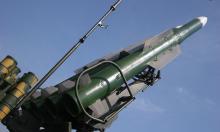Voyagers are still seeking for aliens in deep black space
The wanderers of the universe are still alive
The humankind will celebrate one of the most remarkable dates in the history of the space research on August 20. This day will mark 25 years since the beginning of Voyager’s mission. The mission was originally planned for four years, but it is actually still going on.
NASA specialists launched two spacecrafts Voyager 1 and Voyager 2, which were basically meant for exploring Jupiter and Saturn. It was originally supposed that both of these satellites would save up the information about the planets and then transmit it to the Earth. Voyagers’s existence was supposed to be over in 1981.
Nevertheless, the unique parade of planets made the NASA administration prolong the mission of Voyager spacecrafts. This phenomenon happens only once in 175 years, when four gigantic gas planets (including Uranus and Neptune) are in one and the same line.
Unfortunately, Voyager 1 was thrown out of the Solar system level (upwards) in 1980, after the satellite passed by the orbit of Jupiter. Voyager 2 successfully reached Uranus’ and Neptune’s orbits nine years later, but then it was out of the level too (downwards).
Both spacecrafts explored four remote planets of the system within 12 years. They also explored their 48 moons. This is the unique result, Voyagers have done more than any other space mission. Right now Voyagers keep flying away from the Sun. By the way, the number of people involved in the project reduced from 300 to about a dozen over 25 years.
The interest to the two wanderers of the Universe is likely to return soon again. The satellites are approaching the borders of the so-called heliopause - the area, in which solar ions come into conflict with the interstellar space.
Specialists say that Voyager 1 will soon cross the border of the blast wave – the flatness, at which the speed of the solar wind particles becomes slower than the acoustic speed. If everything is alright, then Voyagers will reach the border of the blast wave, cross over it and see, what happens in the interstellar space.
These satellites are meant for the exploration of planetary systems, they cannot collect the information from the deep space. But even the minimum of information will be extremely valuable for science. Scientists hope that the power of Voyagers’ plutonium batteries will be enough for at least 20 more years.
Translated by Dmitry Sudakov
Subscribe to Pravda.Ru Telegram channel, Facebook, RSS!





